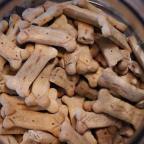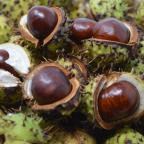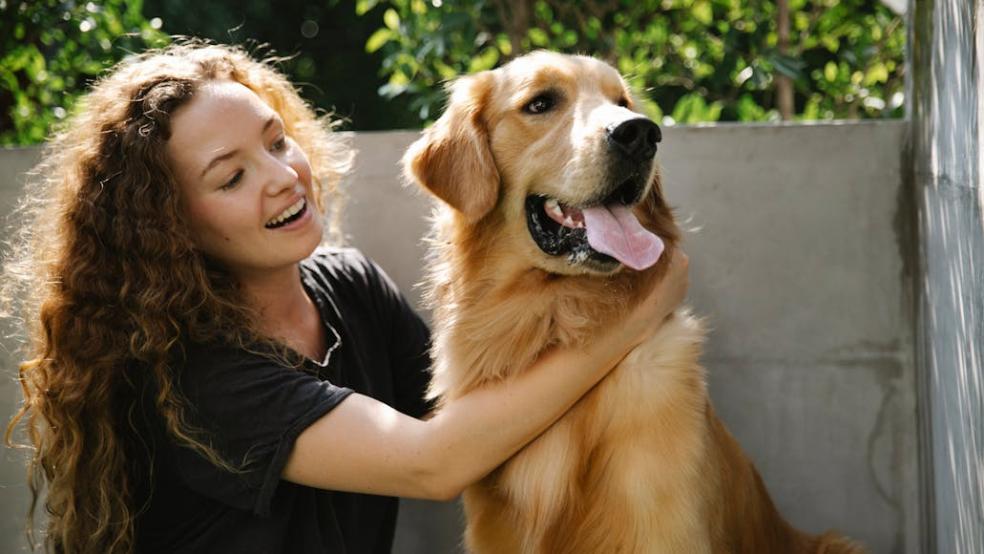
General Dog Care Guide: Everything You Need to Know for Your Furry Friend
Taking care of a dog involves more than just providing food and shelter—it’s about creating an environment where your pet can thrive physically, mentally, and emotionally. From establishing a daily exercise routine to maintaining a clean, safe living space, each aspect of dog care contributes to your pet’s overall well-being. Ensuring your dog receives proper nutrition, preventive health care, and regular grooming not only enhances their quality of life but also strengthens the bond you share. Brands like happystaffyco.com offer quality dog products that can support your efforts in providing top-tier care, from comfortable beds and durable toys to essential accessories that keep your pet healthy and happy.
For dog owners, the goal is to provide a nurturing environment where physical and emotional needs are met consistently. Implementing a daily routine that incorporates exercise, nutritious meals, mental stimulation, and grooming fosters a well-adjusted, happy, and healthy pet. Whether you’re navigating the responsibilities of a new puppy or caring for a senior dog, staying informed about the best practices in dog care can make all the difference in supporting your pet’s lifelong well-being.
Understanding Your Dog’s Basic Needs
Every dog has fundamental needs that extend beyond food and water. Meeting these essential needs is crucial for fostering a well-adjusted, happy, and healthy pet. A daily routine that incorporates nutrition, hydration, exercise, and a safe living environment not only ensures physical health but also supports emotional stability and overall well-being. Creating a structured routine helps reduce anxiety, prevent behavioral issues, and strengthen the bond between you and your dog.
By understanding and consistently addressing these basic needs, pet owners can effectively minimize health risks, promote positive behavior, and provide a nurturing environment that encourages healthy development. Let’s explore each aspect of basic dog care in detail, starting with nutrition and diet, one of the most vital components of canine well-being.
1.1. Nutrition and Diet
A balanced diet serves as the cornerstone of your dog’s health, affecting everything from coat condition and energy levels to immune function and weight management. Nutritional needs vary based on factors like breed, age, activity level, and underlying health conditions.
Key Dietary Components:
- Protein: Essential for muscle growth, tissue repair, and overall energy. High-quality protein sources include chicken, beef, fish, and lamb. Puppies and highly active breeds typically require more protein to support growth and muscle maintenance.
- Fats: Critical for skin health, coat shine, and brain development. Healthy fats like omega-3 and omega-6 fatty acids also aid in nutrient absorption. Sources include fish oil, flaxseed, and chicken fat.
- Carbohydrates: Provide essential energy, especially for active and working dogs. Complex carbohydrates, such as brown rice, sweet potatoes, and oats, offer sustained energy and aid in digestive health.
- Vitamins and Minerals: Support various bodily functions, from bone development to immune response. Calcium, phosphorus, and vitamin D promote strong bones and teeth, while antioxidants like vitamins C and E combat inflammation and oxidative stress.
- Fiber: Promotes digestive health and prevents constipation. Fiber-rich foods like pumpkin and carrots can also help manage weight by keeping your dog feeling fuller for longer.
Feeding Guidelines:
- Consult your veterinarian to determine the ideal portion size, feeding frequency, and specific dietary requirements based on your dog’s age, size, and health status
- Monitor your dog's weight regularly and adjust portions as necessary to prevent obesity, a leading cause of joint problems and cardiovascular issues in dogs
- Avoid feeding human foods high in salt, sugar, and artificial additives, as they can lead to gastrointestinal distress, obesity, and other health complications.
- Establish a consistent feeding schedule to prevent overeating and support digestive regularity.
1.2. Hydration
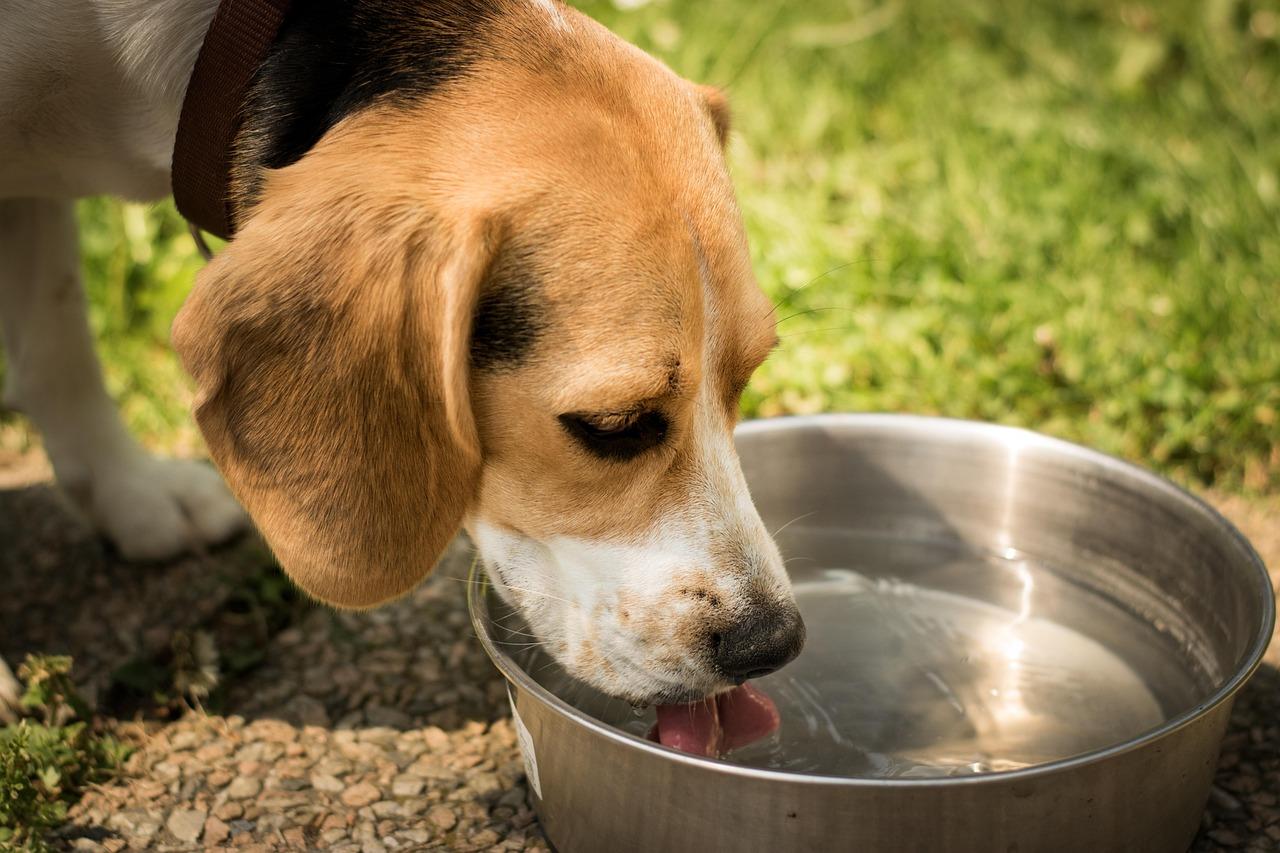
Hydration is vital for maintaining optimal bodily functions, from temperature regulation and joint lubrication to nutrient transportation and waste elimination. Dogs are particularly susceptible to dehydration during hot weather, strenuous exercise, and illness.
Signs of Dehydration:
- Dry, sticky gums and nose
- Loss of skin elasticity (skin that doesn’t return to its normal position when pinched)
- Sunken eyes and lethargy
- Excessive panting and rapid breathing
- Dark, concentrated urine or reduced urination
How to Keep Your Dog Hydrated:
- Place multiple water bowls throughout the house to encourage frequent drinking.
- Consider using a pet fountain, as the continuous flow of water can entice dogs to drink more.
- During hot weather or after intense play, add ice cubes to the water to keep it cool and refreshing.
- For dogs that are reluctant to drink, try flavoring the water with a splash of low-sodium chicken broth.
- Monitor water intake daily, especially for senior dogs, puppies, and those with kidney issues.
Emergency Hydration:
- If you suspect severe dehydration, administer small amounts of water gradually and seek veterinary care immediately.
- Oral rehydration solutions, such as Pedialyte (without added flavors or sweeteners), can help replenish lost electrolytes but should only be given under veterinary guidance.
1.3. Safe Living Environment
A safe, clean, and comfortable living space is essential for a dog’s physical and emotional well-being. Dogs thrive in environments that are structured, predictable, and free from hazards. Establishing a safe living area not only prevents accidents and injuries but also creates a sanctuary where your dog feels secure and relaxed.
Creating a Safe Space:
- Designated Resting Area: Provide a cozy bed in a quiet corner where your dog can rest undisturbed. This space should be away from high-traffic areas to minimize stress and promote uninterrupted sleep.
- Hazard-Free Zone: Remove sharp objects, electrical cords, toxic plants, and small items that could pose choking hazards. Common toxic plants include lilies, poinsettias, and aloe vera.
- Secure Perimeter: If your dog has access to the yard, inspect the fence for gaps or weak spots to prevent escape. Ensure gates are securely latched, and monitor for potential digging areas.
- Temperature Control: Keep indoor temperatures moderate to prevent overheating or hypothermia, especially for brachycephalic breeds like pugs and bulldogs, which are prone to respiratory issues.
- Pet-Proofing Measures: Install baby gates to restrict access to areas with potential dangers, such as the kitchen, garage, or swimming pool.
Maintaining Cleanliness:
- Bedding: Wash bedding at least once a week to eliminate dirt, dander, and parasites. Opt for machine-washable, hypoallergenic materials for easy cleaning.
- Food and Water Bowls: Clean and sanitize bowls daily to prevent bacterial buildup, which can lead to gastrointestinal infections. Stainless steel or ceramic bowls are ideal, as they resist bacteria more effectively than plastic.
- Living Area: Vacuum and mop floors regularly, especially if your dog is prone to shedding or suffers from allergies.
- Toy Rotation: Wash and disinfect toys weekly, particularly chew toys that can harbor bacteria. Rotate toys to keep your dog mentally stimulated and prevent boredom.
Exercise and Mental Stimulation
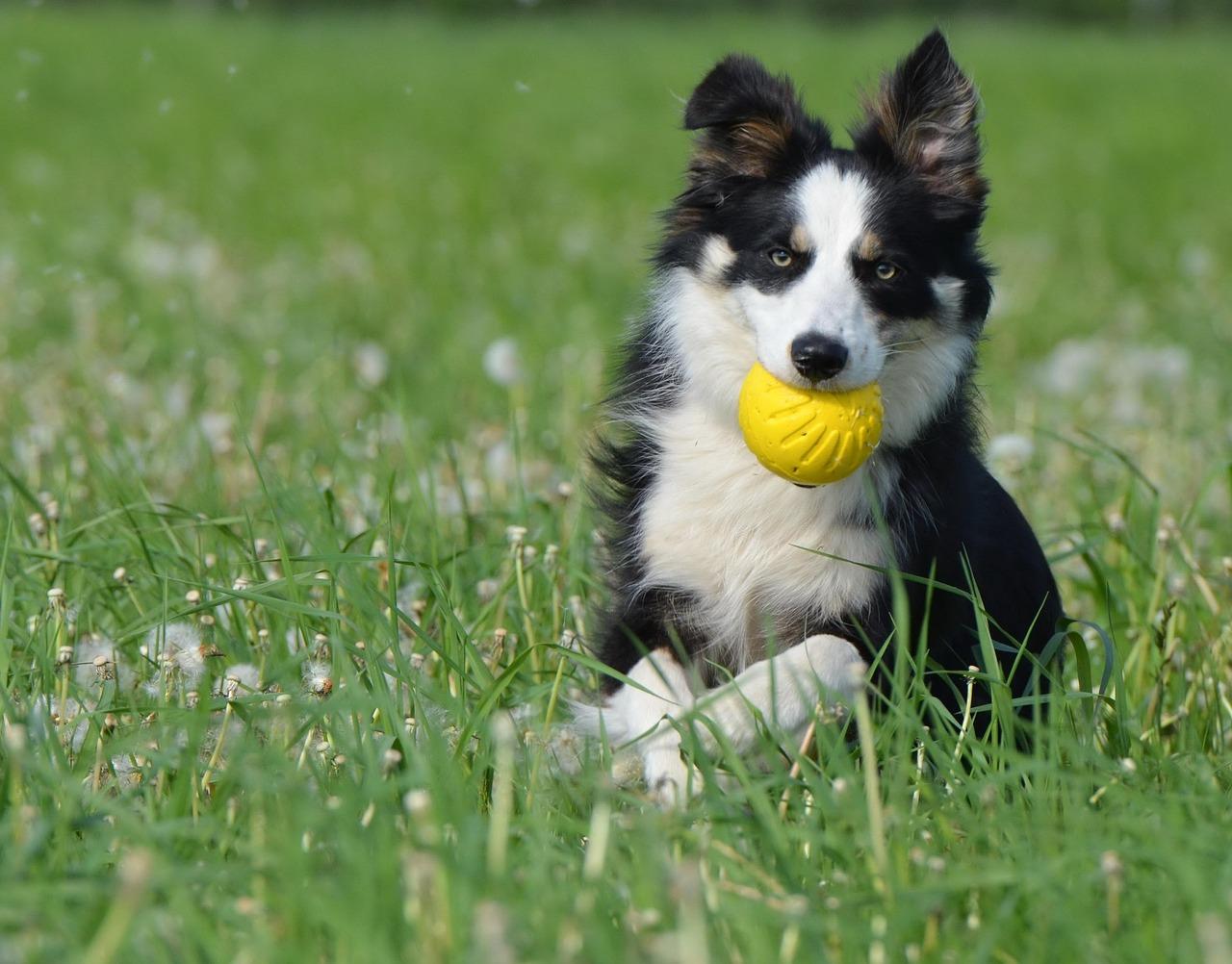
Exercise and mental stimulation are vital components of comprehensive dog care, contributing significantly to a dog’s physical health, mental well-being, and overall happiness. Regular exercise helps maintain a healthy weight, improves cardiovascular health, and prevents destructive behaviors caused by excess energy. Meanwhile, mental stimulation engages a dog’s cognitive abilities, keeping their mind sharp and preventing boredom-related issues like excessive barking, chewing, or digging.
For optimal results, a balanced routine should incorporate both physical and mental activities tailored to your dog’s breed, age, health status, and energy level. Let’s explore effective ways to provide comprehensive exercise and mental engagement for your furry friend.
2.1. Physical Activities for Dogs

Physical exercise is essential for preventing obesity, promoting joint health, and reducing behavioral issues stemming from pent-up energy. Different breeds and life stages require varying levels of activity. Puppies and high-energy breeds often need more intense exercise than senior or less active dogs.
Types of Physical Activities:
Daily Walks: Walking is a fundamental exercise that benefits dogs of all ages and sizes. Aim for at least 30 minutes to an hour, depending on your dog's breed and energy level. High-energy breeds, such as Border Collies and Huskies, may require longer walks or multiple sessions throughout the day.
- Use a secure leash and harness to prevent escape.
- Alternate walking routes to keep the experience stimulating and engaging.
- Incorporate brief training sessions during walks to reinforce commands like “heel” or “sit.”
Fetch and Tug-of-War: These high-energy games engage your dog's muscles, providing a cardiovascular workout while reinforcing social interaction. Use durable, non-toxic toys designed for tugging and fetching to prevent accidental ingestion of small parts.
Benefits:
- Enhances muscle strength and coordination.
- Provides mental stimulation through interactive play.
- Strengthens the bond between you and your dog.
Obstacle Courses: Create a simple agility course using household items like cones, hoops, and tunnels. This activity improves agility, focus, and confidence while providing both physical and mental challenges.
Key Exercises:
- Jumping through hoops
- Weaving through poles
- Climbing small ramps
- Crawling under low bars
Swimming: Swimming is a low-impact exercise that is gentle on the joints, making it ideal for senior dogs or those recovering from injuries. Always supervise your dog in the water and consider a canine life vest for safety.
Benefits of Swimming:
- Builds muscle without straining joints.
- Cools the body during hot weather.
- Provides a full-body workout, engaging multiple muscle groups.
Hiking and Trail Runs: For physically fit, high-energy breeds, hiking offers a combination of cardiovascular exercise and mental stimulation through exposure to new environments.
Precautions:
- Check weather conditions to avoid overheating.
- Carry fresh water and a portable bowl for hydration.
- Inspect paws for cuts, abrasions, or ticks after the hike.
2.1.1 Exercise Considerations by Age and Breed
Different life stages and breeds have distinct exercise requirements. Understanding these variations helps prevent overexertion and ensures your dog gets the appropriate level of physical activity.
- Puppies: Puppies have bursts of energy but should not engage in prolonged, high-impact activities to avoid joint damage. Focus on short walks, light fetch sessions, and gentle playtime.
- Adult Dogs: Adult dogs, particularly working breeds, thrive with structured exercise routines that combine cardio, agility, and mental games. Aim for at least 60-90 minutes daily.
- Senior Dogs: Older dogs benefit from low-impact activities like short walks, swimming, or slow-paced fetch. Monitor for signs of fatigue or joint discomfort.
- Small Breeds: Small breeds, such as Chihuahuas and Pomeranians, may only require 30 minutes of exercise daily, as they can tire quickly.
- Large Breeds: Large breeds, like Great Danes and Mastiffs, are prone to joint issues and should avoid intense running or jumping. Focus on steady-paced walks and gentle play.
2.2. Mental Stimulation
Mental stimulation is crucial for preventing boredom, reducing anxiety, and promoting cognitive development. Engaging your dog’s mind with challenging activities can prevent destructive behavior and enhance overall well-being.
Types of Mental Stimulation Activities:
Puzzle Toys: Interactive toys that require problem-solving keep your dog mentally engaged. Choose toys with varying levels of difficulty to prevent frustration or boredom.
Examples:
- Treat-dispensing toys that require manipulation to release snacks.
- Sliding puzzle boards that challenge your dog to find hidden treats.
- Snuffle mats that mimic the natural foraging process.
Scent Games: Dogs have an extraordinary sense of smell, making scent-based games an excellent way to stimulate their minds.
How to Play:
- Hide small treats around the house or yard and encourage your dog to sniff them out.
- Introduce scent-detection training, teaching your dog to identify specific scents.
- Rotate hiding spots to keep the game unpredictable and engaging.
Training Sessions: Incorporating regular training sessions keeps your dog’s mind sharp and reinforces good behavior. Focus on teaching new tricks, reinforcing basic commands, or introducing advanced obedience training.
- Use positive reinforcement with treats and praise.
- Break sessions into 10-15 minute intervals to maintain focus.
- Include mental challenges, such as finding hidden objects or identifying toys by name.
Name Recognition Games: Teach your dog to identify specific toys by name, then instruct them to retrieve the correct toy. This activity sharpens focus, improves recall, and provides mental enrichment.
How to Play:
- Start with two toys, each with a distinct name.
- Hold up a toy, say its name, and reward your dog for correctly identifying it.
- Gradually increase the number of toys to challenge your dog’s memory.
Rotating Toys and Activities: Prevent boredom by rotating toys every few days. This keeps playtime fresh and prevents your dog from losing interest in familiar toys.
Suggestions:
- Swap out interactive toys weekly to keep your dog guessing.
- Introduce new games periodically, such as scent work or puzzle toys.
- Use mealtime as an opportunity for mental stimulation by using slow-feeder bowls or food puzzles.
2.2.1 Mental Enrichment for Senior Dogs
Older dogs may not require as much physical exercise but still benefit from mental enrichment. Engage their cognitive abilities with low-impact activities:
- Gentle Scent Work: Hide treats in accessible areas for easy sniffing and discovery.
- Interactive Toys: Opt for toys with large, easy-to-grip components to accommodate aging joints.
- Memory Games: Practice simple commands like “sit” and “stay” to reinforce cognitive skills.
- Calming Activities: Provide toys with calming scents like lavender or chamomile to soothe anxious senior dogs.
Grooming and Hygiene

Grooming is a fundamental aspect of dog care that goes beyond maintaining appearance—it is essential for preventing infections, promoting skin health, and ensuring overall comfort. A comprehensive grooming routine includes regular coat maintenance, nail trimming, and dental care. Each aspect requires attention to detail and consistency to keep your dog healthy and comfortable.
3.1. Coat Care
The condition of your dog’s coat can reveal much about their overall health. Regular coat maintenance prevents matting, reduces shedding, and promotes the distribution of natural oils that keep the skin moisturized. The type of coat your dog has will determine the appropriate grooming techniques and frequency.
3.1.1. Brushing
Brushing is essential for removing loose fur, preventing tangles, and stimulating blood circulation to the skin. Different coat types require different brushes and techniques:
- Short-Haired Breeds (e.g., Boxers, Beagles): Use a rubber curry brush or bristle brush to remove dead hair and dirt. Brush once a week to maintain coat health.
- Medium to Long-Haired Breeds (e.g., Golden Retrievers, Collies): Use a slicker brush and comb to detangle fur and remove mats. Brush at least three times a week to prevent matting.
- Double-Coated Breeds (e.g., Huskies, Shepherds): Utilize an undercoat rake to remove the dense undercoat during shedding season. Brush daily during shedding periods.
- Curly or Wavy Coats (e.g., Poodles, Bichon Frises): Use a pin brush and detangler spray to prevent matting. Daily brushing is recommended to maintain coat texture.
Brushing Techniques:
- Start from the head and work toward the tail, following the natural direction of the fur.
- Use gentle, even strokes to avoid pulling on the skin.
- For heavily matted fur, use a dematting tool to carefully separate tangles.
- Reward your dog with treats after each session to associate brushing with positive experiences.
3.1.2. Bathing
Bathing removes dirt, allergens, and excess oils from the coat. However, over-bathing can strip the skin of its natural oils, leading to dryness and irritation.
Bathing Frequency:
- Short-Haired Breeds: Every 4-6 weeks
- Medium to Long-Haired Breeds: Every 3-4 weeks
- Double-Coated Breeds: Every 6-8 weeks or as needed
- Dogs with Skin Conditions: Follow the veterinarian’s recommended schedule using medicated shampoos.
Steps for Proper Bathing:
- Preparation: Brush your dog thoroughly to remove loose fur and prevent matting.
- Water Temperature: Use lukewarm water to avoid shocking the skin.
- Shampoo Application: Use a dog-specific shampoo, starting from the neck and working downward. Avoid getting shampoo in the eyes, ears, or mouth.
- Rinsing: Rinse thoroughly to remove all shampoo residue. Leftover residue can irritate the skin.
- Conditioning: Apply a moisturizing conditioner to prevent dry skin.
- Drying: Towel dry and use a blow dryer on a low setting, ensuring the coat is fully dry to prevent fungal infections.
3.1.3. Seasonal Grooming
Grooming routines should be adjusted based on the season to accommodate shedding patterns and temperature changes:
- Spring and Fall (Shedding Seasons): Increase brushing frequency for double-coated breeds to prevent matting and reduce loose fur buildup.
- Summer: Trim longer coats but avoid shaving too close to the skin, as the coat provides protection against sunburn.
- Winter: Apply paw balm to protect against ice and salt. Keep the coat slightly longer to provide warmth but continue regular brushing to prevent mats.
3.2. Nail Trimming
Long nails can cause discomfort, alter a dog’s gait, and potentially lead to infections. Regular nail trimming not only prevents these issues but also protects your floors and furniture from scratches.
3.2.1. Recognizing When to Trim
- Clicking sounds on hard surfaces when your dog walks
- Splayed toes or visible discomfort while walking
- Nails that curl under and touch the ground
- Redness or swelling around the nail bed
3.2.2. Nail Trimming Procedure:
- Preparation: Gather a high-quality nail clipper, styptic powder, and a comfortable towel.
- Positioning: Sit on the floor and gently hold your dog’s paw. If your dog is anxious, enlist the help of another person to provide treats and comfort.
-
Clipping Technique:
- Trim small sections at a time to avoid cutting the quick, a sensitive area containing blood vessels and nerves.
- If the nail is light-colored, locate the pink quick and avoid cutting too close.
- For dark-colored nails, trim conservatively to prevent accidental injury.
- Grinding (Optional): After trimming, use a nail grinder to smooth rough edges.
- Reward: Praise and reward your dog to reinforce positive behavior.
3.3. Dental Care
Dental health is crucial for preventing gum disease, plaque buildup, and systemic infections. Neglecting oral hygiene can lead to painful conditions that affect eating and overall health.
3.3.1. Brushing Teeth
Brushing is the most effective way to maintain oral health and reduce plaque buildup.
Frequency: Brush at least 2-3 times per week using a canine toothbrush and vet-approved toothpaste.
Technique:
- Gently lift the lips to expose the teeth.
- Apply a small amount of toothpaste and use circular motions to clean the teeth and gums.
- Focus on the back molars where plaque tends to accumulate.
3.3.2. Dental Chews and Toys
Dental chews and toys not only keep your dog entertained but also help scrape away plaque and tartar.
Benefits of Dental Chews:
- Freshen breath
- Reduce plaque and tartar buildup
- Promote jaw muscle strength
Recommended Types:
- Rawhide chews
- Rubber chew toys
- Dental sticks with textured surfaces
3.3.3. Professional Dental Cleanings
Annual veterinary dental cleanings provide a thorough assessment of oral health.
Procedure: The veterinarian will perform a full dental cleaning under anesthesia, including scaling and polishing the teeth.
Prevention: Regular cleanings prevent periodontal disease, a serious condition that can cause tooth loss and systemic infections.
Signs of Dental Issues:
- Red, swollen gums
- Persistent bad breath
- Difficulty chewing or loss of appetite
- Loose, discolored, or broken teeth
Preventive Health Care
Preventive health care is a cornerstone of responsible pet ownership. By implementing routine veterinary visits, timely vaccinations, and parasite control, you can significantly reduce the risk of health complications and detect potential issues before they become severe. Proactive care not only extends your dog’s lifespan but also ensures a higher quality of life by preventing common ailments, managing chronic conditions, and maintaining overall wellness.
4.1. Regular Vet Visits
Annual veterinary check-ups are essential for monitoring your dog’s health and identifying early signs of illness. Regular exams provide an opportunity for veterinarians to assess overall body condition, conduct diagnostic tests, and administer necessary treatments or vaccinations.
Benefits of Regular Vet Visits:
- Early detection of diseases such as diabetes, heart disease, and kidney disorders.
- Monitoring of weight and body condition to prevent obesity-related health issues.
- Timely administration of vaccines to prevent contagious diseases.
- Assessment of dental health to prevent periodontal disease.
- Parasite screening and preventive treatments.
During Wellness Exams, Vets Will:
- Assess Weight and Body Condition:
Vets will evaluate your dog’s weight and overall body condition to detect signs of obesity or malnutrition. Obesity increases the risk of arthritis, diabetes, and heart disease, while underweight dogs may suffer from nutrient deficiencies or underlying health conditions.
- Conduct Blood Tests:
Routine blood tests assess organ function, detect infections, and identify potential metabolic disorders. Common blood tests include:
- Complete Blood Count (CBC): Measures red and white blood cells to detect anemia, infections, or immune system disorders.
- Blood Chemistry Panel: Evaluates liver and kidney function, electrolyte balance, and glucose levels.
- Heartworm Test: Screens for heartworm infection, a potentially fatal parasitic disease transmitted by mosquitoes.
- Administer Necessary Vaccinations:
Vaccines are administered based on age, breed, lifestyle, and regional risks. Puppies receive a series of vaccines, while adult dogs require booster shots to maintain immunity.
Recommended Frequency of Vet Visits:
- Puppies (0-1 Year): Every 3-4 weeks for vaccinations and growth monitoring.
- Adults (1-7 Years): Annually for wellness exams, dental check-ups, and booster vaccines.
- Seniors (7+ Years): Twice annually to monitor age-related health changes and manage chronic conditions.
Regular veterinary visits are crucial for maintaining optimal health and ensuring that any emerging health issues are addressed promptly.
4.2. Vaccinations
Vaccinations protect dogs from potentially fatal diseases by stimulating their immune system to recognize and fight specific pathogens. Vaccination schedules vary depending on the dog’s age, lifestyle, and health status, but certain core vaccines are universally recommended for all dogs.
Core Vaccinations:
- Rabies:
Legally required in most regions, rabies is a fatal viral disease that affects the central nervous system. Vaccination is typically administered at 12-16 weeks of age and then every 1-3 years, depending on local regulations.
- Distemper:
A highly contagious virus affecting the respiratory, gastrointestinal, and nervous systems. Symptoms include fever, coughing, seizures, and nasal discharge. Vaccination is essential for preventing severe complications.
- Parvovirus:
A highly infectious virus that causes severe gastrointestinal distress, leading to vomiting, diarrhea, and dehydration. Puppies are particularly vulnerable and require a series of vaccinations to build immunity.
- Canine Hepatitis (Adenovirus):
Targets the liver, kidneys, and eyes. Symptoms include jaundice, fever, and abdominal pain. The vaccine is typically included in combination vaccines (e.g., DHPP or DA2PP).
Non-Core Vaccinations:
Non-core vaccines are administered based on individual risk factors, such as lifestyle, geographical location, or exposure to other animals. These include:
- Bordetella: Prevents kennel cough, often required for dogs in boarding facilities.
- Lyme Disease: Protects against tick-borne illness in regions with high tick populations.
- Leptospirosis: Prevents bacterial infection that affects the kidneys and liver, particularly in areas prone to standing water or wildlife exposure.
Vaccination Schedule:
- Puppies: Initial vaccines begin at 6-8 weeks of age, with boosters every 3-4 weeks until 16 weeks old.
- Adults: Annual or triennial boosters, depending on the vaccine type.
- Senior Dogs: Regularly assess immunity levels to determine the need for continued vaccination.
4.3. Parasite Control
Parasites can pose serious health risks, from external irritations like flea infestations to life-threatening diseases like heartworm. Implementing a comprehensive parasite control plan is essential for preventing infestations and protecting your dog’s overall health.
Common Parasites:
- Fleas: Cause itching, dermatitis, and flea allergy anemia. Flea infestations can also lead to tapeworm transmission.
- Ticks: Transmit diseases like Lyme disease, ehrlichiosis, and anaplasmosis.
- Heartworms: Parasitic worms that lodge in the heart and lungs, leading to congestive heart failure if untreated.
- Intestinal Worms: Roundworms, hookworms, and tapeworms can cause malnutrition, diarrhea, and intestinal obstruction.
Preventive Measures:
- Monthly Flea and Tick Preventatives:
Use topical treatments, oral medications, or flea collars to repel and kill fleas and ticks.
- Heartworm Medication:
Administer monthly heartworm preventatives to prevent larval heartworms from maturing and causing heart or lung damage.
- Deworming:
Deworm puppies every 2-3 weeks until 12 weeks of age, then every 3-6 months for adult dogs.
- Environmental Control:
Regularly clean and vacuum bedding, carpets, and outdoor areas to eliminate flea eggs and larvae.
- Routine Screenings:
Conduct annual fecal exams to detect and treat intestinal parasites.
Training and Socialization
Training and socialization are essential for fostering good behavior, building confidence, and preventing fear-based aggression. Proper training establishes clear boundaries and enhances communication, while socialization reduces anxiety in new environments.
5.1. Basic Commands to Teach
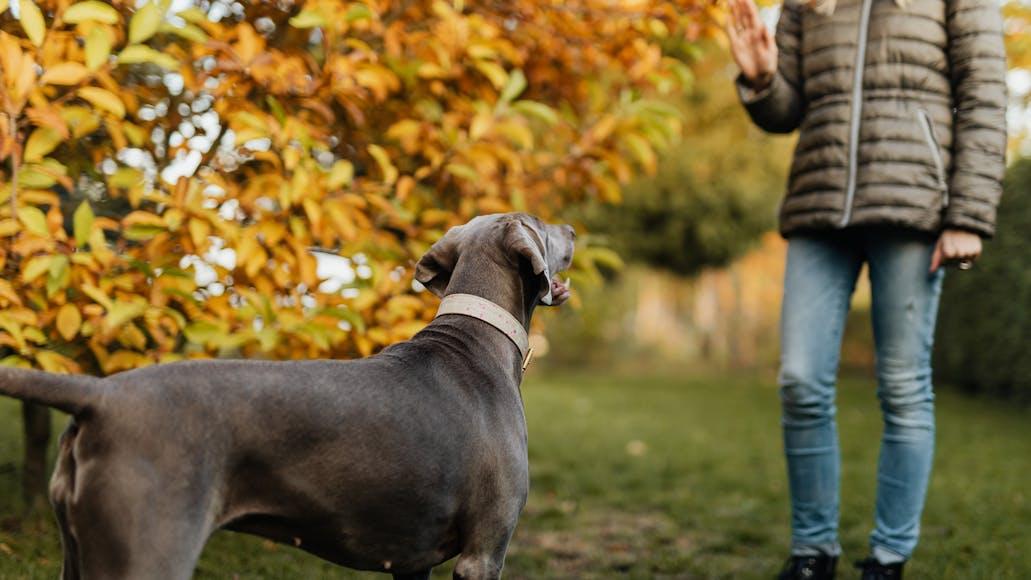
Teaching basic commands provides structure and safety for your dog. Essential commands include:
- Sit: Encourages calm, controlled behavior and prevents jumping or running off.
- Stay: Teaches impulse control, preventing your dog from darting out doors or running into traffic.
- Come: Ensures recall in potentially dangerous situations, such as when off-leash at a park.
- Leave It: Prevents ingestion of harmful objects, such as toxic foods or sharp objects.
Training Tips:
- Use positive reinforcement with treats and praise to reward desired behaviors.
- Keep training sessions short (10-15 minutes) to maintain focus.
- Practice commands in various settings to reinforce learning in different environments.
5.2. Socialization
Socialization helps dogs feel comfortable around unfamiliar people, pets, and situations, reducing the likelihood of fear or aggression.
Socialization Techniques:
- Regular Walks in New Areas: Expose your dog to various sights, sounds, and surfaces to build confidence.
- Playdates with Well-Behaved Dogs: Supervised play helps improve social skills and teaches appropriate interactions.
- Gradual Exposure to Noises: Introduce common household sounds (vacuum cleaner, doorbell) gradually to prevent fear.
- Positive Reinforcement: Reward calm behavior during new experiences to create positive associations.
Recognizing Health Issues
Being vigilant and attentive to your dog’s behavior and physical condition can help you identify potential health issues early, allowing for prompt intervention and treatment. Dogs are unable to verbalize their discomfort, so it is essential to be observant of subtle changes that could indicate underlying health concerns. Recognizing the signs of illness and understanding when to seek immediate care are crucial components of responsible pet ownership.
6.1. Signs of Illness
Early detection of health issues can significantly improve outcomes. While some symptoms are mild and may resolve with rest and hydration, others require immediate veterinary attention. Here are key signs of illness to watch for:
- Sudden Lethargy: A noticeable drop in energy levels or lack of interest in daily activities could indicate an underlying issue. Causes may include infections, dehydration, anemia, or heart disease. Monitor for additional symptoms such as fever, weakness, or disorientation.
- Persistent Vomiting or Diarrhea: Occasional vomiting or diarrhea is common, but persistent episodes lasting more than 24 hours warrant veterinary evaluation. Potential causes include gastrointestinal infections, ingestion of foreign objects, or food intolerance.
Warning Signs:
- Blood in vomit or stool
- Severe abdominal pain or bloating
- Signs of dehydration, such as dry gums or sunken eyes
Loss of Appetite: A decreased interest in food can indicate digestive problems, dental pain, or systemic infections. Monitor your dog’s eating habits and note any weight loss or excessive drooling. If the loss of appetite persists for more than 48 hours, consult a veterinarian.
Excessive Itching or Scratching: Persistent itching, licking, or biting at the skin may signal allergies, skin infections, or parasitic infestations.
Possible Causes:
- Fleas, ticks, or mites
- Allergic dermatitis or food allergies
- Fungal or bacterial infections
- Hot spots or open sores
Unusual Lumps or Bumps: Regularly inspect your dog’s body for lumps, swellings, or growths. While some lumps are benign, others may indicate cysts, abscesses, or tumors. Monitor for changes in size, shape, or color and consult a vet if the lump appears painful or is rapidly growing.
Respiratory Distress: Coughing, wheezing, or difficulty breathing can indicate respiratory infections, heart disease, or foreign object obstruction.
Immediate Concerns:
- Gagging or choking
- Open-mouth breathing
- Pale or blue gums
Changes in Urination or Defecation: Increased or decreased frequency of urination, straining, or blood in urine can indicate urinary tract infections, kidney disease, or bladder stones. Monitor bowel movements for signs of constipation or diarrhea, and report any abnormalities to your veterinarian.
6.2. When to Seek Immediate Care
Certain symptoms require urgent veterinary attention, as they may indicate life-threatening conditions. Knowing when to seek emergency care can make a significant difference in your dog’s recovery.
- Difficulty Breathing: Labored breathing, gasping, or open-mouth breathing may indicate respiratory distress, heart failure, or an obstruction in the airway. Seek immediate veterinary care to prevent complications.
- Seizures: Seizures may manifest as sudden shaking, twitching, drooling, or loss of consciousness. Causes include epilepsy, toxin exposure, or head trauma. Remain calm, keep your dog in a safe area, and contact a vet immediately.
- Sudden Collapse or Fainting: Collapsing without warning can be a sign of cardiac arrhythmias, severe dehydration, or heatstroke. Keep your dog calm and still, and transport them to the nearest emergency vet.
- Blood in Urine or Stool: Blood in urine may indicate bladder infections, kidney disease, or internal injury. Bloody diarrhea or black, tarry stool may indicate gastrointestinal bleeding or severe infection.
- Severe Injury or Trauma: If your dog is hit by a vehicle, falls from a height, or sustains a puncture wound, seek emergency care regardless of visible injuries. Internal damage may not be immediately apparent.
- Poisoning or Toxic Ingestion: If you suspect your dog has ingested a toxic substance, such as antifreeze, human medication, or household cleaners, contact a veterinarian or animal poison control immediately.
Having a list of emergency contacts, including your veterinarian, nearby emergency clinics, and poison control, ensures that you are prepared to act quickly in the event of a health crisis.
Creating a Safe and Happy Home
A comfortable, secure living environment is essential for your dog’s well-being. Dog-proofing your home and implementing stress-reduction techniques can prevent accidents, reduce anxiety, and promote overall happiness.
7.1. Dog-Proofing Your Home
Dog-proofing is not only about preventing damage to your belongings but also about protecting your dog from potential hazards. Here’s how to create a safe living space for your pet:
- Secure Trash Cans and Chemicals: Dogs are naturally curious and may attempt to rummage through trash bins. Secure all garbage cans with lids and keep chemicals, cleaning agents, and medications stored out of reach.
- Remove Hazardous Plants: Certain plants, such as lilies, poinsettias, and philodendrons, are toxic to dogs. Research plants in your home and replace toxic varieties with pet-safe options like spider plants or Boston ferns.
- Install Baby Gates: Use gates to restrict access to areas with potential dangers, such as staircases, kitchens, or garages. Gates also help with house training and establishing boundaries.
- Secure Electrical Cords: Chewing on cords can lead to electric shocks or burns. Use cord protectors or hide cables behind furniture to prevent access.
- Eliminate Small Objects: Pick up small objects like buttons, coins, or rubber bands that could pose choking hazards.
- Check for Sharp Edges: Ensure that sharp furniture edges or exposed wires are covered to prevent accidental injuries.
7.2. Stress Reduction Techniques
A calm, predictable environment helps reduce stress and prevent anxiety-related behaviors such as excessive barking or destructive chewing. Implement these techniques to create a serene space for your dog:
- Maintain a Consistent Routine: Dogs thrive on structure. Establish regular feeding, walking, and play schedules to provide a sense of stability.
- Create a Cozy Resting Area: Designate a quiet, comfortable space where your dog can retreat to rest or decompress. Provide a soft bed, blankets, and toys to create a sense of security.
- Use Calming Aids: Pheromone diffusers, calming sprays, and anxiety wraps can help soothe nervous dogs, especially during thunderstorms, fireworks, or unfamiliar situations.
- Background Noise: Play soft music or white noise to mask external sounds that may trigger anxiety, such as construction or loud neighbors.
- Interactive Toys and Puzzles: Mental stimulation reduces boredom and redirects nervous energy into productive play. Rotate toys to keep your dog engaged.
A Lifelong Commitment to Your Dog’s Well-Being
Caring for a dog is a long-term responsibility that requires ongoing effort, patience, and dedication. By adhering to the guidelines of proper nutrition, exercise, grooming, preventive health care, and safe living practices, you not only ensure your dog’s physical health but also nurture their emotional well-being.
Stay attentive to changes in behavior, appearance, or health, and consult with veterinary professionals regularly to catch potential issues early. Building a strong bond based on trust, respect, and consistent care will foster a lifetime of companionship, ensuring that your dog enjoys a happy, healthy, and fulfilling life.



